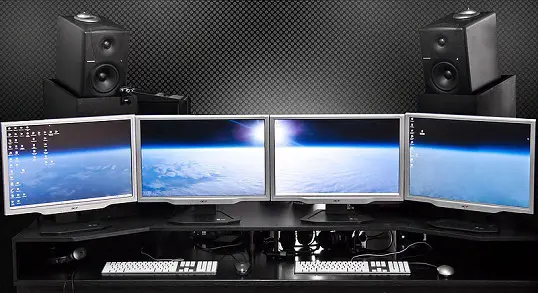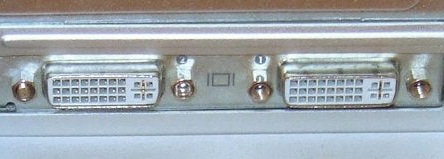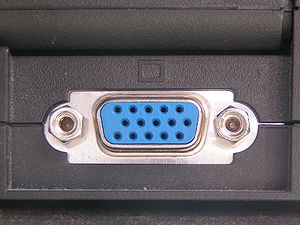It is convenient to work on multiple monitors in order to increase the area available for computer programs running on single PC.

Multiple monitor setup increases the net display area of your system and an inexpensive way of improving your computer usage. It’s good to have multiple displays if you working with image editing, video editing, playing games, multiple screens real estate simplify your workplace.. It keeps your application windows open and visible on screen at the same time and minimizes the need to clicks or scrolling.
Multiple monitors is a great to increase your efficiency, with it you have enough space on your desk.
There are the ways in which you can set up multiple monitors.
Graphics Cards

Check if your computer’s current graphics card supports multiple video outputs.
Some computers have DVI ports or VGA. The older CRT monitors usually use VGA, higher end monitors use DVI. Depending on the model some may have both ports on it. Usually single graphics card supports maximum two monitors if it has ports, If you want to set up more than two monitors purchase a graphics card. There are numerous graphics cards available in the market under $100. Make sure you new graphics card has at least two monitors output ports. Some of AMD Radeon 5xxx series cards have four outputs, but are only capable of driving three at a time.
model some may have both ports on it. Usually single graphics card supports maximum two monitors if it has ports, If you want to set up more than two monitors purchase a graphics card. There are numerous graphics cards available in the market under $100. Make sure you new graphics card has at least two monitors output ports. Some of AMD Radeon 5xxx series cards have four outputs, but are only capable of driving three at a time.
If you have a laptop, chances are good it has two or more video outputs. Some laptops allow different combinations of output up to three displays as VGA, HDMI and built-in display.
Using External Hardware
There’s other option for laptops and desktops to get a graphics expansion module, a small box with separate set of videos outputs. You can connect these modules to your PC’s video output port. These modules let you drive three or more displays from single VGA, DVI or HDMI output.
Another hardware is USB to video out adapter. You can multiple USB adapters simultaneously. Under Windows up to 6 USB displays can be connected.
Monitors
You could go out and splurge on some nice big, new monitors, but there’s a good chance whatever you’re using now will work just fine, which means you just need to add a second screen. When it comes to buying a second monitor, try to stick with a model similar to what you have. While not totally necessary, similar models will generally be easier to set up and configure.
Also keep in mind that older graphics cards probably won’t have support for newer connection types like HDMI. The most common connection type on these non-HDMI displays is DVI and fortunately, adapters for connecting HDMI to DVI are inexpensive and very common.
If you’ve got a new monitor but have old graphics card, be sure to pick up the appropriate adapter when you buy that second monitor.
Set Up display on your OS
Once you got your graphics card installed and second display is arranged, it’s time to set up your monitors in your Operating system.
Multiple monitors Set Up in Windows
When you are connected the second monitor to your PC, Turn the PC power ON. Windows will detect your new display and install drivers automatically.
You should have a mirror image of your desktop on two displays, that’s not the thing we want. To change it go to control panel click on Display and select Multiple display option. From the left side menu of opened window adjust the screen resolution and orientation which best suites your setup.
Now you have two monitors attached to your PC. You can work around on both monitors and divide your work on large workplace.
Multiple monitors Set Up in Mac OS
Not every Mac supports multiple monitors, so be sure to check the Apple support documents for your model before you purchase a second monitor.
Assuming your Mac does supports, all you need to do is plug it in and Mac OS should automatically recognize it. Go to System Preferences > Displays and you will see two screens pop up – one on each monitor. From here, you can control your monitor settings, add backgrounds, decide where your menus and dock will show up, and so on.
Even if your Mac does not have a graphics card with two monitor ports, there are USB-based solutions (Google “USB Dual Monitor adaptor”). These will be significantly slower than a real graphics card, but unless you’re playing games in full screen mode, you should be OK.
Various products on the iTunes store will allow you to turn an iPad into a second “virtual” monitor for your Mac. This may not be the perfect solution for everyone, but that iPad could be just the right spot for Twitter feeds and control panels.
Multiple monitors Set Up in Linux
Ubuntu’s monitor setup is in System > Preference > Display. Once that screen is up, click the “Detect monitors” button, which will force the system to find your new monitor. Select all the monitors listed and click the “On” radio button.
Be sure to uncheck the “mirror” option and then click “Apply”.
While the process of setting up multiple monitors in Linux is easy, finding drivers that support your monitors isn’t always easy. Before you go out to purchase a new graphics card, be sure to check with the Ubuntu forums and read up on success and failure stories.
You can adjust the orientation of your second monitor that best suites you. May be you set up in portrait mode, this is best to view longer documents to reduce the amount of scrolling to read your document or web page.
While we’ve focused on dual monitors for single operating systems, it is in fact possible to run multiple OSs on multiple monitors simultaneously. If you’re interested, check out Synergy. Not only can Synergy share a single mouse, keyboard and multiple monitors across operating systems, it can even share clipboard data across all those PCs and operating systems.
Image credit : Wikipedia

Comments